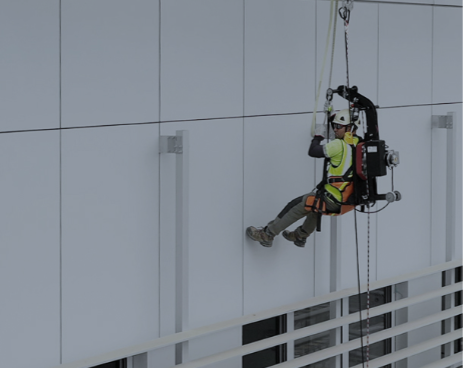In the realm of modern architecture and building maintenance, efficient access solutions are crucial for ensuring safety, productivity, and aesthetic harmony. Rail systems have emerged as integral components, offering versatile ways to access various heights and facilitate tasks like building maintenance and facade cleaning. This comprehensive guide explores different types of rail systems, their benefits, applications, and considerations for choosing the right system for your needs.
Understanding Rail Systems for Building Access
Rail systems are specialized tracks installed on buildings to facilitate the movement of personnel and equipment across different heights and surfaces. Evolving from traditional scaffolding and ladders, modern rail systems provide enhanced safety, efficiency, and flexibility. These systems are crucial for accessing challenging areas such as high-rise building facades, atriums, and technical ceilings.
Types of Rail Systems
Aluminum Suspension Rail System The Aluminum Suspension Rail System is renowned for its versatility and customization options. Constructed from lightweight yet durable aluminum, this system integrates seamlessly into various architectural settings. It supports heights ranging from 5 to an impressive 300 meters, accommodating equipment like rope access technicians, suspended platforms, and auxiliary hoists. The track can be personalized with curved designs and powder coating in any RAL color, ensuring it complements the building’s aesthetics while offering smooth, controlled movement along the rail’s flange.
Concealed Rail System Concealed rail systems are designed to blend discreetly into architectural features such as technical ceilings and soffits. These systems prioritize aesthetic integration without compromising functionality. Customizable with curved configurations and powder coating options, concealed rails utilize specially crafted brackets for precise alignment with ceilings. Trolleys glide within the rail’s inner channel, offering horizontal movement options that can be manually operated, motorized, or battery-powered. Ideal for applications requiring seamless integration and minimal visual impact, concealed rail systems cater to environments where maintaining architectural aesthetics is paramount.
Climbing SafeAccess Rail The Climbing SafeAccess Rail is tailored for accessing inclined facades and atriums, providing robust solutions for maintenance and cleaning tasks. Featuring a stainless steel chain inserted into the lower channel of the rail, this system supports climbing trolleys equipped with pinions capable of ascending slopes up to 70 degrees. Designed with safety and reliability in mind, the Climbing SafeAccess Rail is indispensable for installations with significant inclines, ensuring secure access for personnel and equipment.
Benefits of Rail Systems
- Efficiency: Enable efficient access to various building heights, enhancing productivity in maintenance and cleaning tasks.
- Flexibility: Accommodate diverse equipment and personnel needs, from rope access technicians to suspended platforms and auxiliary hoists.
- Safety: Provide enhanced safety features such as controlled movement mechanisms and robust construction materials.
- Aesthetic Integration: Offer customization options to blend seamlessly into architectural designs, maintaining visual harmony.
Takeaway
As technology continues to advance, rail systems are expected to incorporate more advanced features such as automated movement and remote monitoring capabilities. These innovations will further enhance safety, efficiency, and sustainability in building access solutions, shaping the future of modern architecture and maintenance practices.

